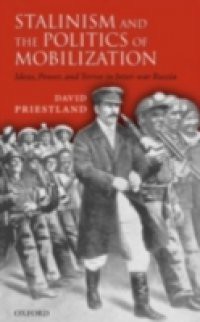Stalinism and the Politics of Mobilization offers a new interpretation of Bolshevik ideology, examines its relationship with Soviet politics between 1917 and 1939, and sheds new light on the origins of the political violence of the late 1930s. While it challenges older views that the Stalinist system and the Terror were the product of a coherent Marxist-Leninist blueprint, imposed by a group of committed ideologues, it argues that ideas mattered inBolshevik politics and that there are strong continuities between the politics of the revolutionary period and those of the 1930s. By exploring divisions within the party over several issues, including class, the relations between elites and masses, and economic policy, David Priestland shows how a number ofideological trends emerged within Bolshevik politics, and how they were related to political and economic interests and strategies. He also argues that central to the launching of the Terror was the leadership's commitment to a strategy of mobilization, and to a view of politics that ultimately derived from the left Bolshevism of the revolutionary period.





 9 (37)
9 (37) 












